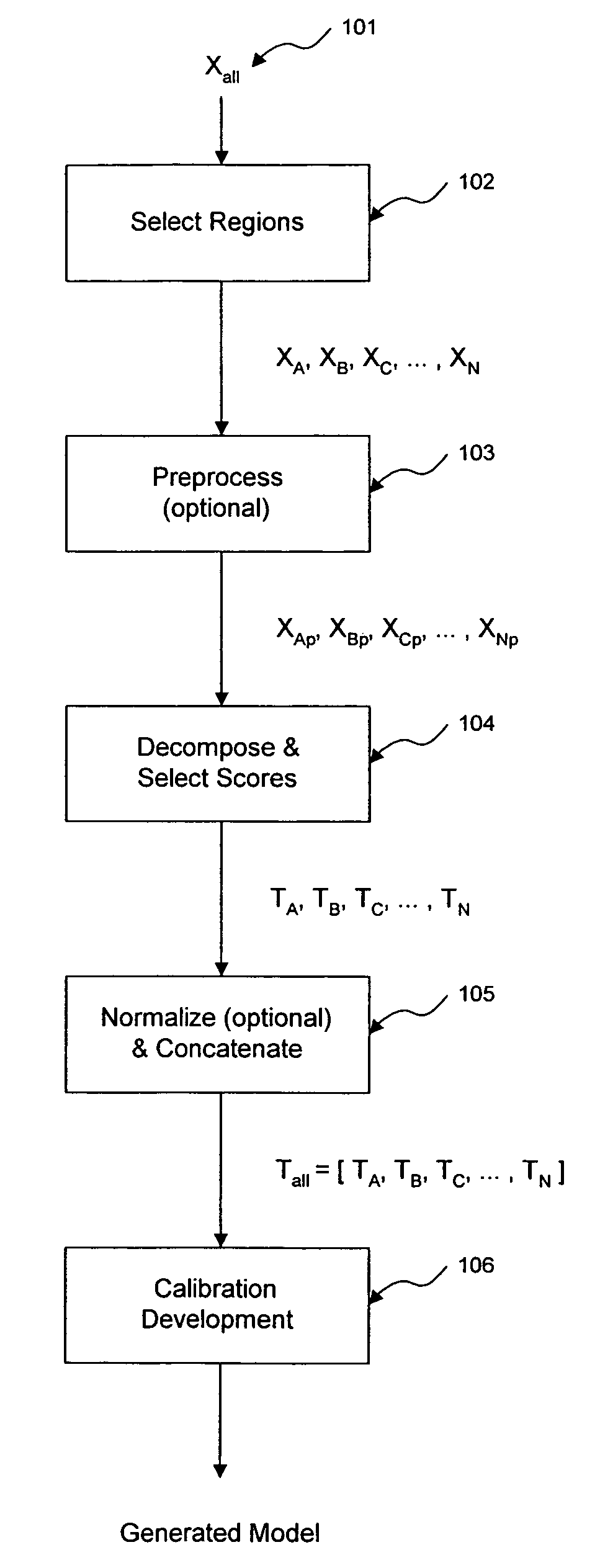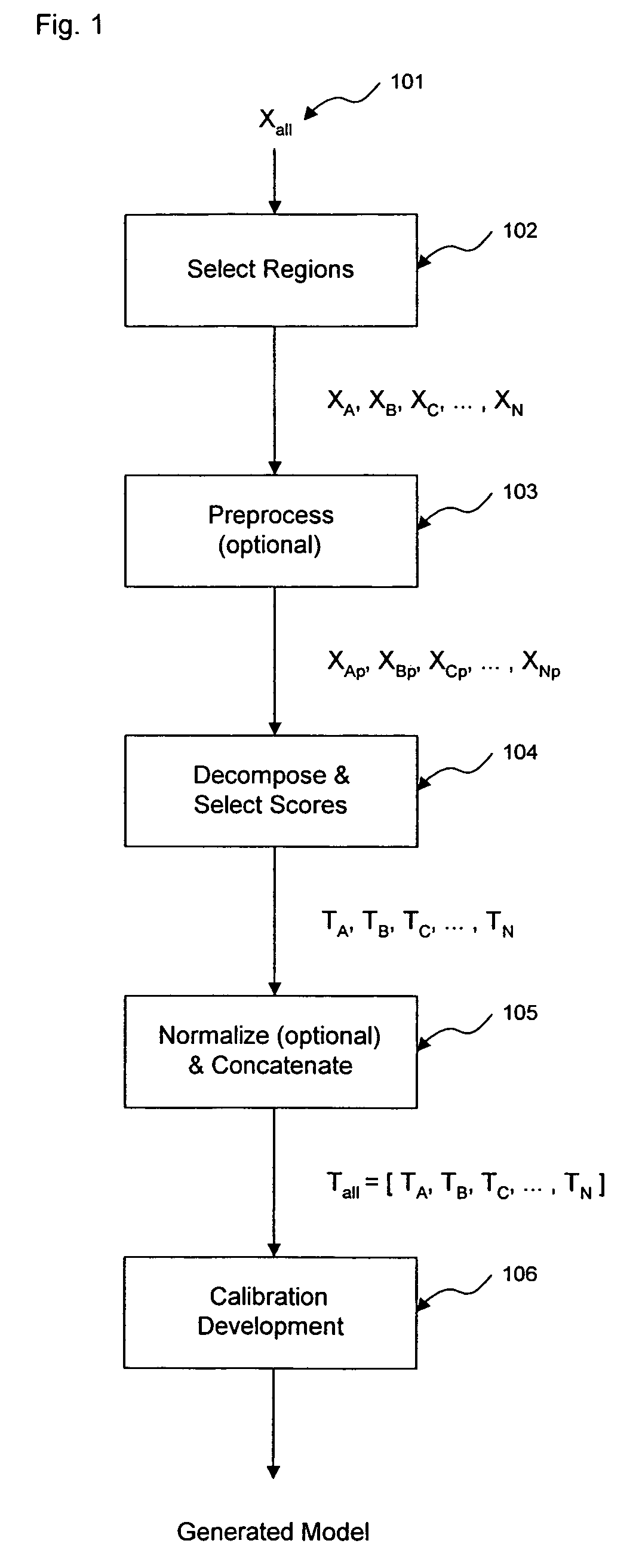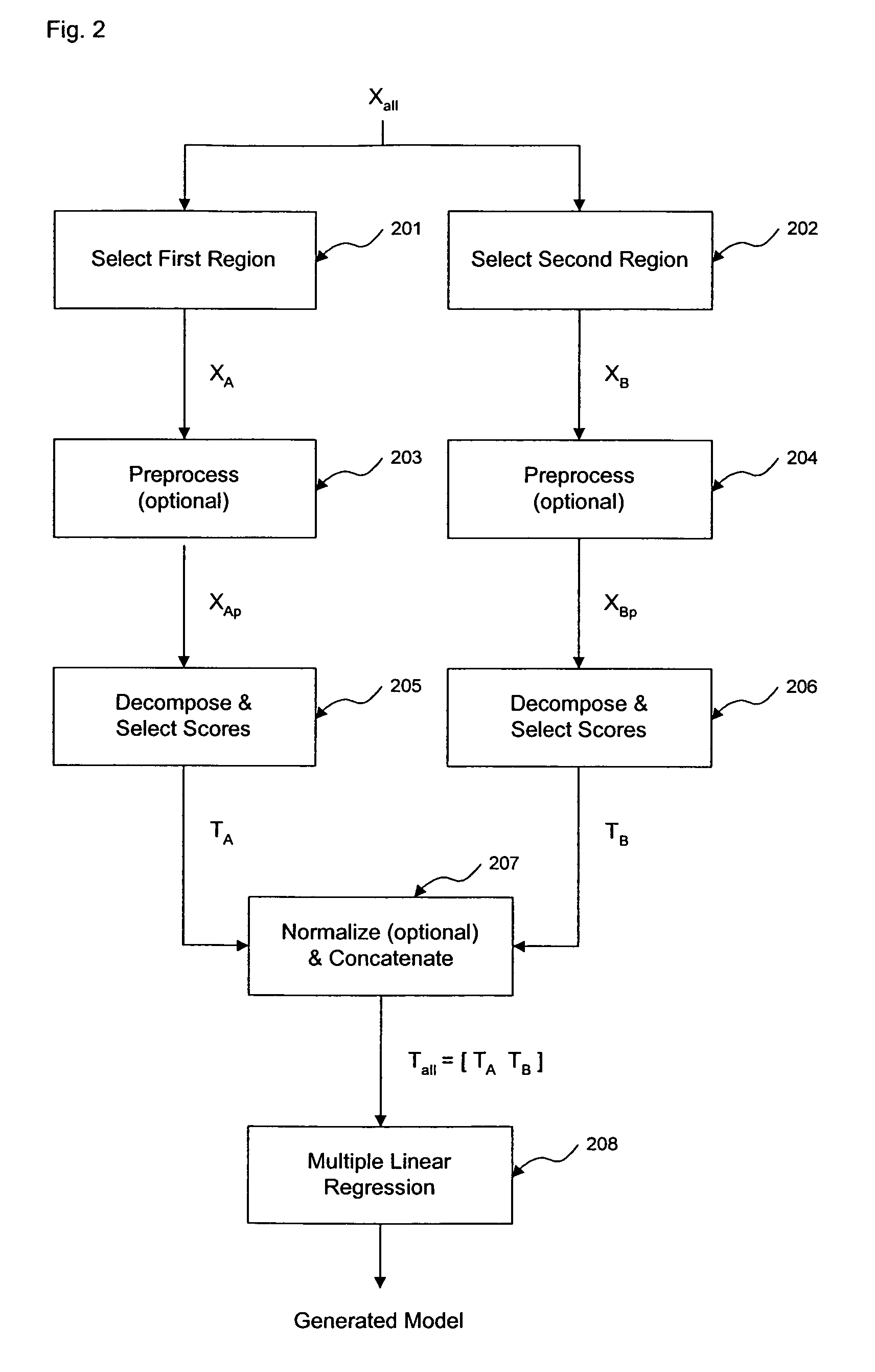Method and apparatus for enhanced estimation of an analyte property through multiple region transformation
an analyte property and multiple region technology, applied in the field of enhancement of estimation of analyte properties or concentrations, can solve problems such as affecting the analysis of matrixes, and achieve the effect of enhancing parameters and enhancing analysis of analyte concentrations
- Summary
- Abstract
- Description
- Claims
- Application Information
AI Technical Summary
Benefits of technology
Problems solved by technology
Method used
Image
Examples
example 1
[0060]A specific example of separately decomposing two matrices with one of the matrices having a region of larger variance is provided. As described below, the example uses near-infrared (near-IR) spectra collected noninvasively to build a model subsequently used to estimate glucose concentrations. The initial matrix of spectra, Xall, are processed with a traditional single decomposition analysis for comparison with the two separate decomposition approach.
[0061]In this example, decomposition of two spectral regions of a data matrix of noninvasive spectra of human tissue is performed so that determination of blood glucose concentration is provided. For comparative purposes, a parallel analysis with a single decomposition is also performed. A detailed description follows.
[0062]It is determined that signal, noise, resolution, and pathlength considerations often dictate that the analysis of noninvasive near-IR spectra of aqueous solutions having small analytical signals, such as the fi...
example 2
[0076]The analyzers used in the first example were used to collect the data set used in this example. The single data matrix based decomposition uses a calibration matrix representing 2939 spectra collected on a total of six subjects using three analyzers over a five week period. The two decomposition approach uses a data set representing 846 spectra collected using five subjects on a total of six analyzers. For both the single and multiple decomposition calibrations, a single prediction data set is used. The prediction matrix represents 141 samples from five different subjects collected over a total of six visits on a single analyzer over a period of eight days collected roughly five months after the end of collection of the calibration data matrices.
[0077]The single decomposition approach applied to Xall in absorbance preprocesses the spectra in four steps: 1) a 41-point first derivative Savitsky-Golay smoothing convolution; 2) multiplicative scatter correction; 3) mean centering;...
PUM
| Property | Measurement | Unit |
|---|---|---|
| wavelengths | aaaaa | aaaaa |
| wavelengths | aaaaa | aaaaa |
| near-infrared spectra | aaaaa | aaaaa |
Abstract
Description
Claims
Application Information
 Login to View More
Login to View More - R&D
- Intellectual Property
- Life Sciences
- Materials
- Tech Scout
- Unparalleled Data Quality
- Higher Quality Content
- 60% Fewer Hallucinations
Browse by: Latest US Patents, China's latest patents, Technical Efficacy Thesaurus, Application Domain, Technology Topic, Popular Technical Reports.
© 2025 PatSnap. All rights reserved.Legal|Privacy policy|Modern Slavery Act Transparency Statement|Sitemap|About US| Contact US: help@patsnap.com



